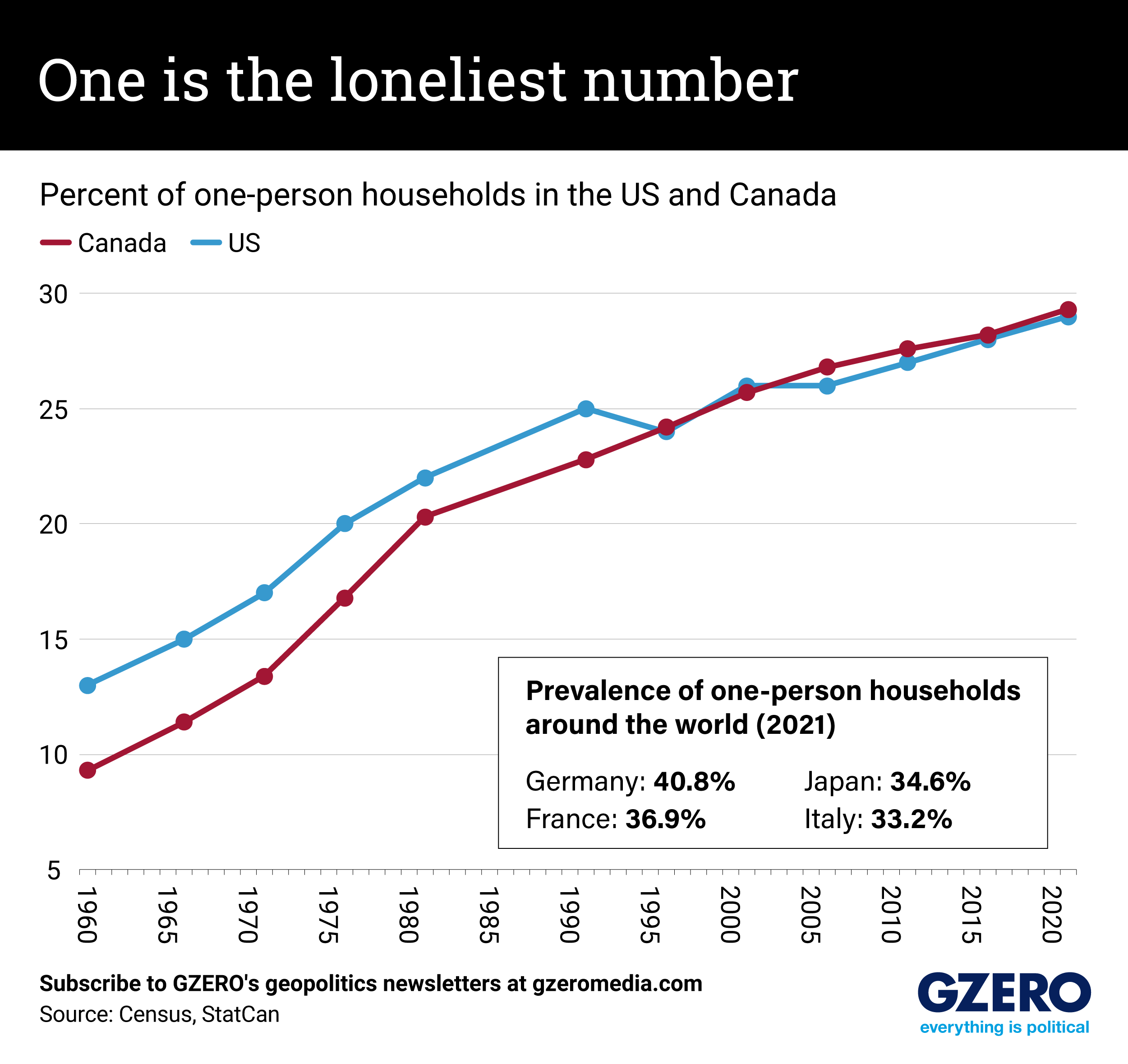October 10, 2024
In Canada and the United States, the trend of living alone has been steadily increasing, driven by declining marriage rates, delayed family formation, increased life expectancy, and greater financial independence.
In 2022 in the US, nearly 30% of households were occupied by only one person, at 28.88%. In 2021, 29% of Canadian households were single-person – the highest share on record. In 1960, those percentages were just 13% and 9.3% respectively for both countries.
Studies have linked living alone to higher rates of depression, and among older adults – who make up the predominant share of single-person households – increased risks of cardiovascular disease, dementia, and premature mortality.
Living alone also contributes to the loneliness epidemic plaguing both countries. US Surgeon General Dr. Vivek Murthy wrote last year that at any moment, one out of every two Americans is experiencing measurable levels of loneliness and called for a national effort to combat the problem. A survey of Canadians found that 40% of the population feels lonely some or all of the time.
Still, if you think it’s bad in the US and Canada, single-living rates are much higher around the world. Take a look.
More For You
A photograph posted by U.S. President Donald Trump on his Truth Social account shows him sitting next to CIA Director John Ratcliffe as they watch the U.S. military operation in Venezuela from Trump's Mar a Lago resort, in Palm Beach, Florida, U.S., January 3, 2026.
@realDonaldTrump/Handout via REUTERS
Most Popular
- YouTube
In this "ask ian," Ian Bremmer analyzes Trump’s recent meeting with Zelensky and how close (or far) Russia and Ukraine are from a peace deal.
Syrian President Ahmed al-Sharaa attends the military parade of the Syrian army in Umayyad Square in central Damascus to mark the one-year anniversary of the fall of the Assad regime, on Dec. 8, 2025.
Mohammed Al-Rifai/dpa via Reuters Connect
A year ago this month, Syria’s brutal dictatorship collapsed. There are signs of recovery, but sectarian violence threatens to undermine the optimism.
© 2025 GZERO Media. All Rights Reserved | A Eurasia Group media company.
